
The Community Clinical Laboratory of the Future
Using the technology of the future to describe the clinical laboratory of the future.
As part of the preparation for a recent panel discussion at the Clinisys Client Summit regarding The Laboratory of the Future, my colleague, Lester Wold M.D., and I asked ChatGPT (a new AI application) for its description of the community laboratory of the future. We found the response interesting and thought we would share it along with some of our thoughts.
The format of this article presents ChatGPT’s response to our prompt followed by our commentary concerning its implications.
The community clinical laboratory of the future, as described by ChatGPT, is likely to be characterized by several key trends and developments that reflect the changing needs and expectations of patients and healthcare providers.
The trends described by ChatGPT included:
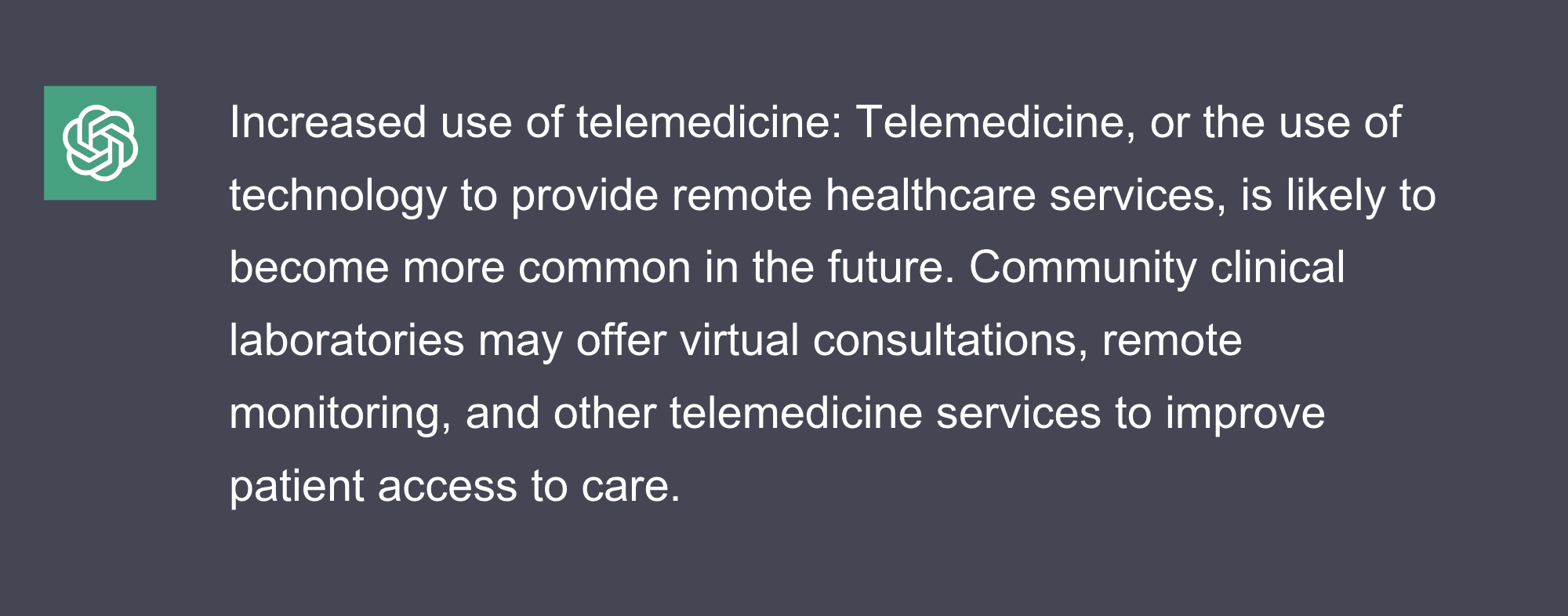
CareTinuum comment: The ChatGPT description above is consistent with the feedback from a recent health system’s senior leadership consultation concerning their strategic focus post COVID. Their comments are reflected in the word cloud below.
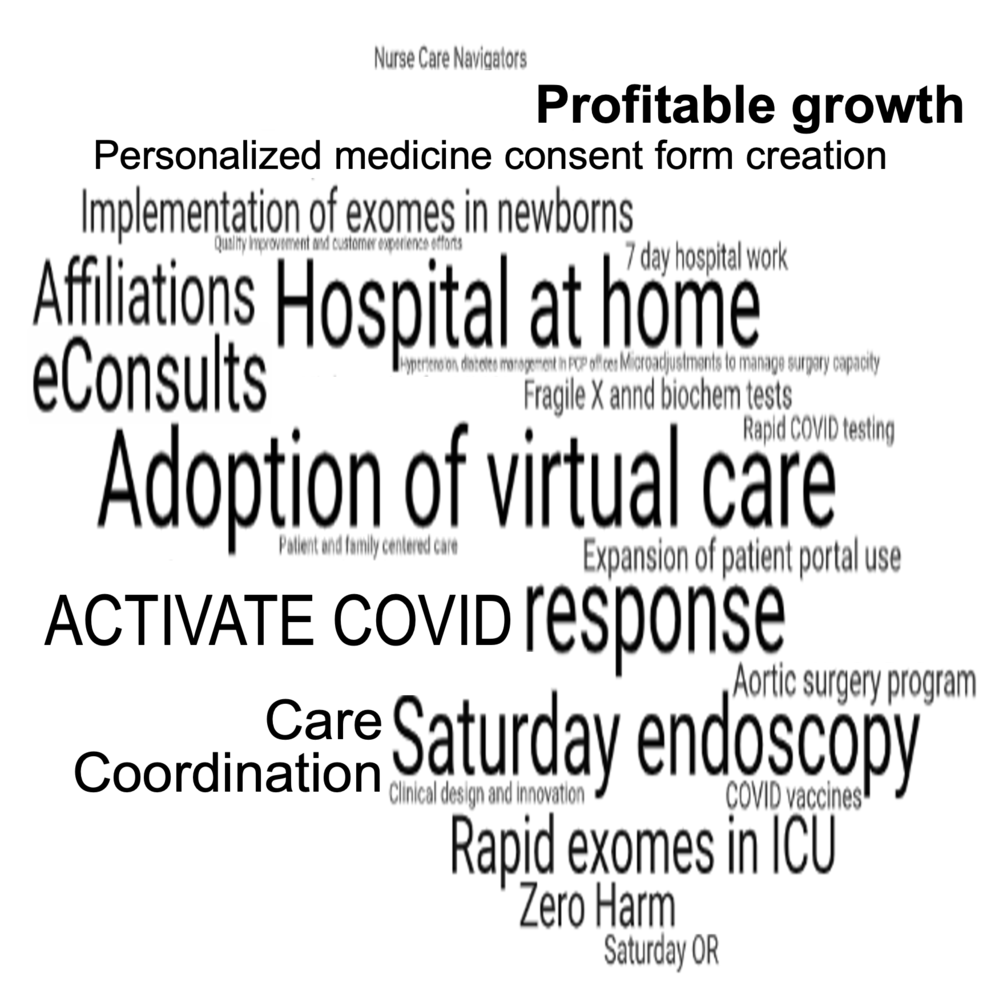
For clinical laboratories to successfully transition to the use of more telemedicine will require expanded and enhanced pre-analytical processes. In a fee-for-service reimbursement environment, with a siloed lab centric perspective, these reconfigured lab services would most likely be viewed as too expensive to implement.
However, from a value-based care perspective, given the potential for significant episode of care savings and patient service enhancements these expenses will be viewed as attractive investments with positive financial returns and enhanced patient outcomes produced by more proactive alerts to patients and providers and improved patient monitoring across the community’s continuum of care.
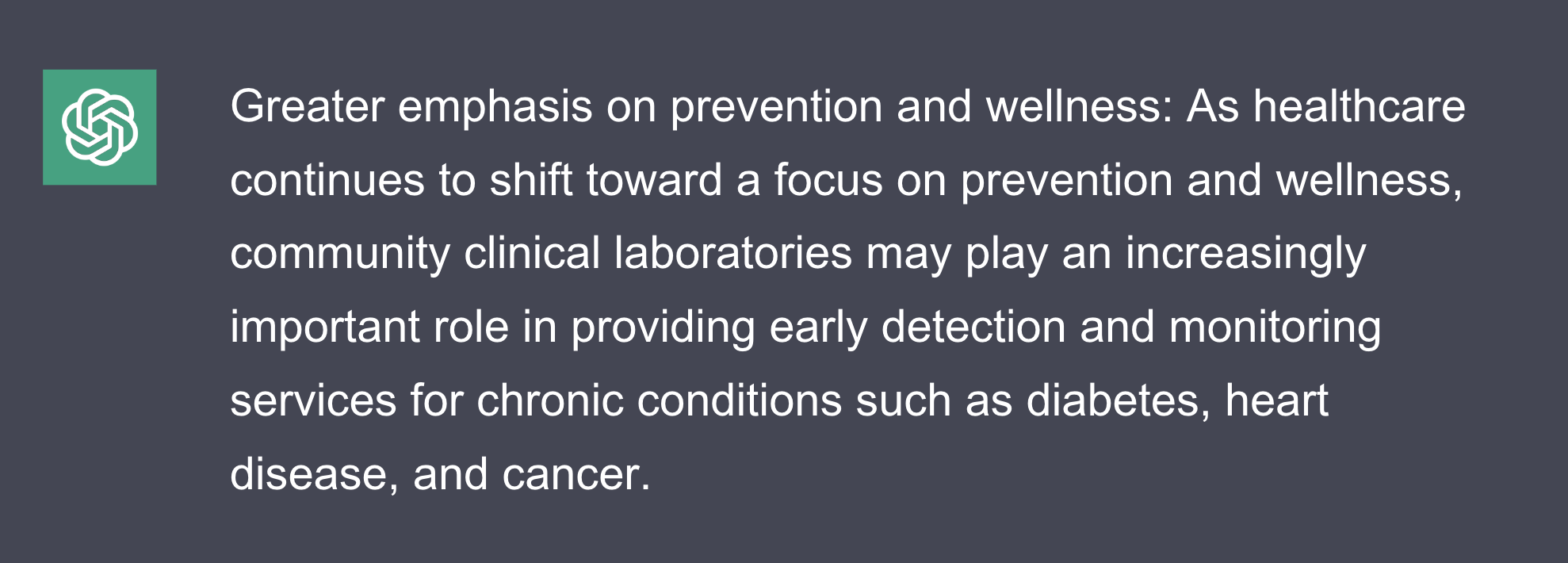
CareTinuum comment: During a recent Clinical Laboratory 2.0 Conference the importance of approaching population health and patient care coordination in a more integrated patient centric manner was discussed extensively and the recently published book BOTH/AND by Katie Kaney DRPH, MBA, FACHE was highlighted.
Clinical laboratories can facilitate this integration since the lab produces approximately 70% of the objective data in a patient’s medical record. This data is linked to patient diagnosis, monitoring and treatment decisions, and therefore directly linked to the majority of patient care costs. In addition, these services represent a critical information source for the coordination of care across all community locations where care is provided.
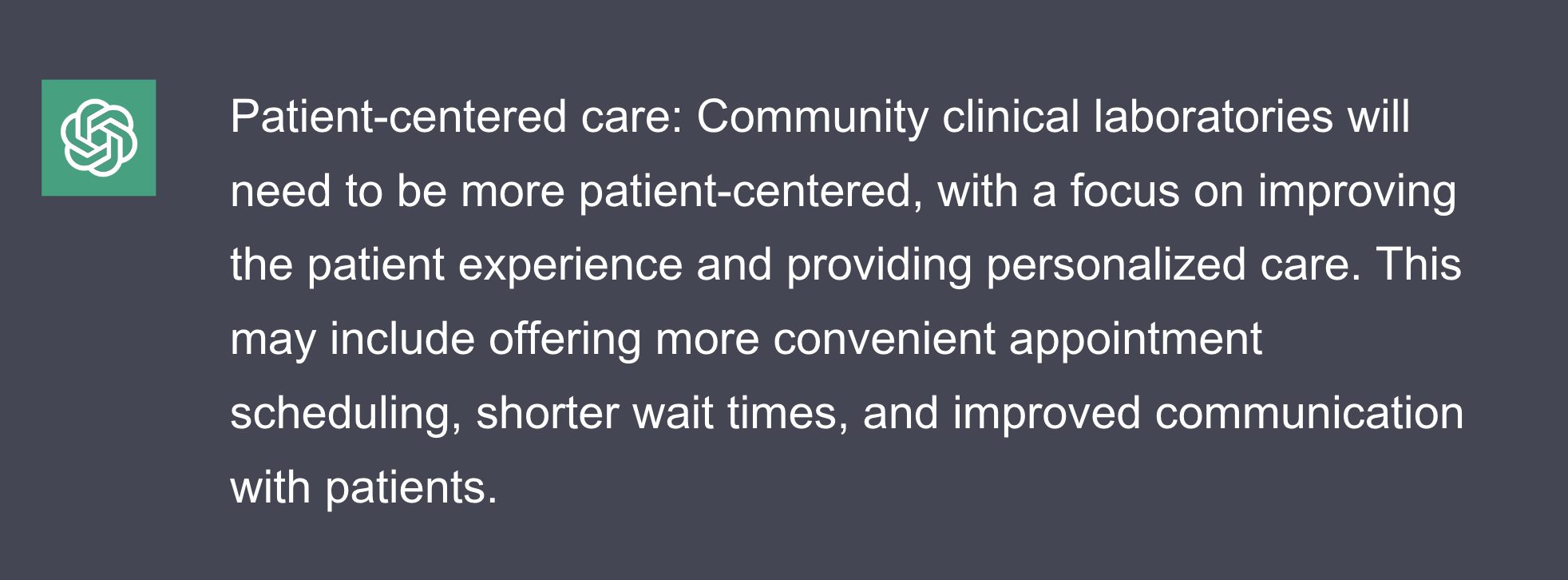
CareTinuum comment: The community clinical laboratory, because it touches every patient’s care in nearly every care setting if it is engaged in a Diagnostic Integration program (Outreach), is ideally suited to enhance the patient’s experience. As an example of the laboratory’s impact, per the Advisory Board, the second highest patient dissatisfier with their physician office visit is that they do not get their lab results fast enough. This patient frustration is often a consequence of tests leaving the community and the associated time consumed as specimens are transported to locations outside of the state.

source: LabLeaders.com and The Advisory Board
To enhance the patients experience, the community clinical laboratory needs to recognize that it is in the information services business. As such all of the tests that can be done locally should stay in the community as long as they can be performed efficiently and effectively. In addition the community laboratory should leverage IT technology wherever possible, while expanding its service footprint to meet the patient’s diagnostic service needs independent of where the patient’s care is being provided in the community.
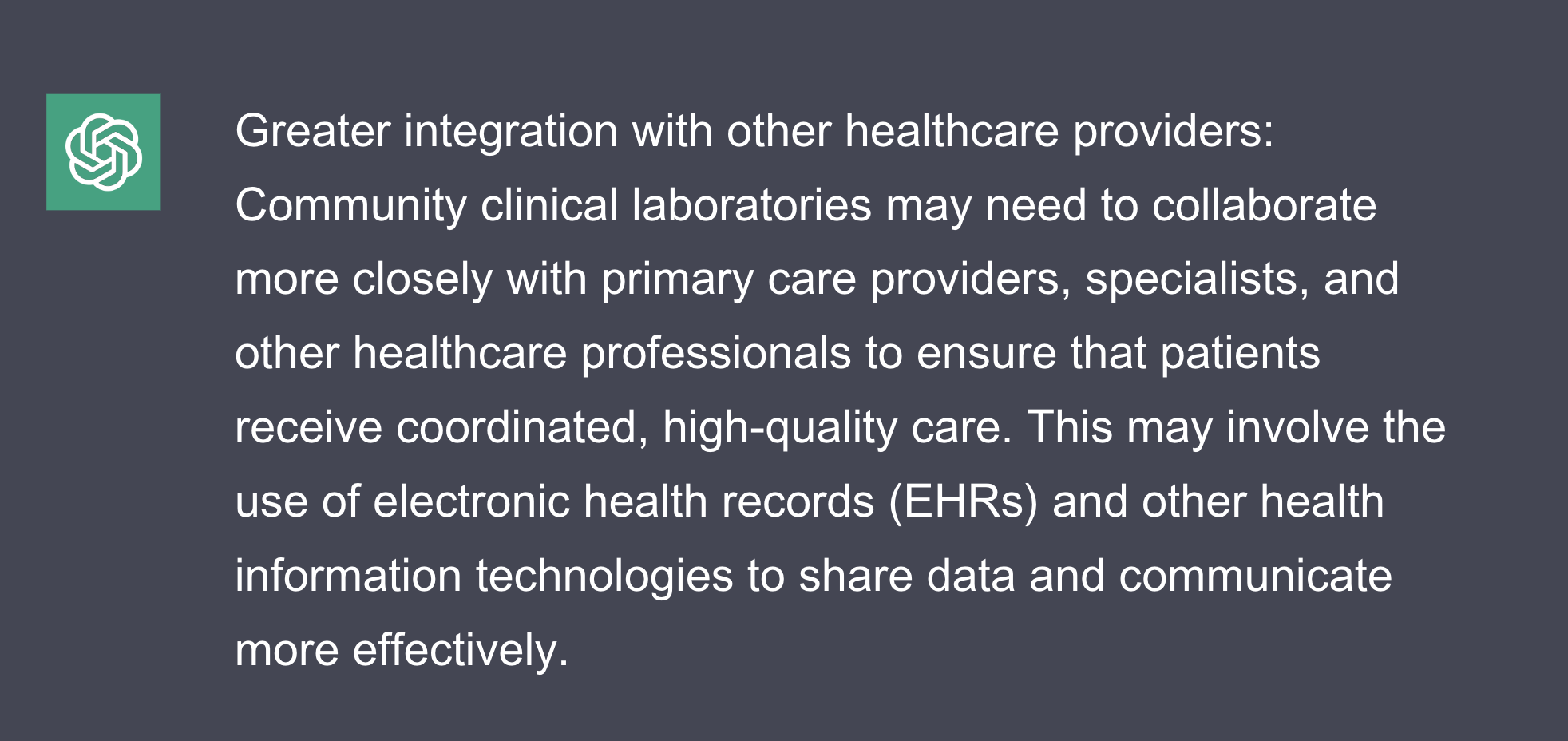
CareTinuum comment: The current fragmented transaction centric lab system must be replaced with a patient centric integrated laboratory diagnostic system where laboratory medicine drives the diagnostic decision-making processes. This new model also produces integrated clean patient centric diagnostic data for patient trending over time and for diagnostic optimization programs aimed at helping providers improve their test ordering patterns and reduce patient care variation. The growth in volume and the expanded services delivered as part of the diagnostic integration program, in addition to producing the previously described benefits, also produces profitable incremental revenue to support the community hospital’s patient care mission.

CareTinuum comment: These exciting technologies are generating new patient care insights today and hold even greater promise to guide a patient’s individualized care needs more precisely in the future. This new technology is made available through reference laboratories today, which is necessary and appropriate.
However, from a reference laboratory test lifecycle perspective, today’s reference lab tests are tomorrow’s community laboratory’s tests. For this technology to be available as close to the patient as possible in the future, ideally in their community, it is necessary for the community hospital laboratory to expand its expertise. For this to occur in a cost-effective manner the community laboratory volume must grow to fund this expansion.
The ability to implement this new technology in support of local precision medicine will take time, however to be ready when the technology is available for wider distribution the necessary laboratory growth needs to begin now.

In summary
Many of the items identified by this ChatGPT query are partially in motion today, but it is important to keep the following admonition in mind.
If you are on the correct path, but not moving fast enough, you are likely to be trampled.
Given the ongoing efforts by Amazon, Walmart, Berkshire Hathaway, CVS and Walgreens, etc. if we don’t start moving at a faster pace we are likely going to be trampled. Local healthcare systems have an advantage, but it will be lost if we don’t embrace change and develop new care and wellness delivery models in a timely manner. The community clinical laboratory of the future with a community wide service focus can play an integral role in this transformation.
We recommend those interested in transitioning into this new set of expectations in a successful manner begin by developing an institutionally focused business case leveraging the process outlined below. This process should outline the resources required to succeed in this transformation as well as possible self-funding approaches.
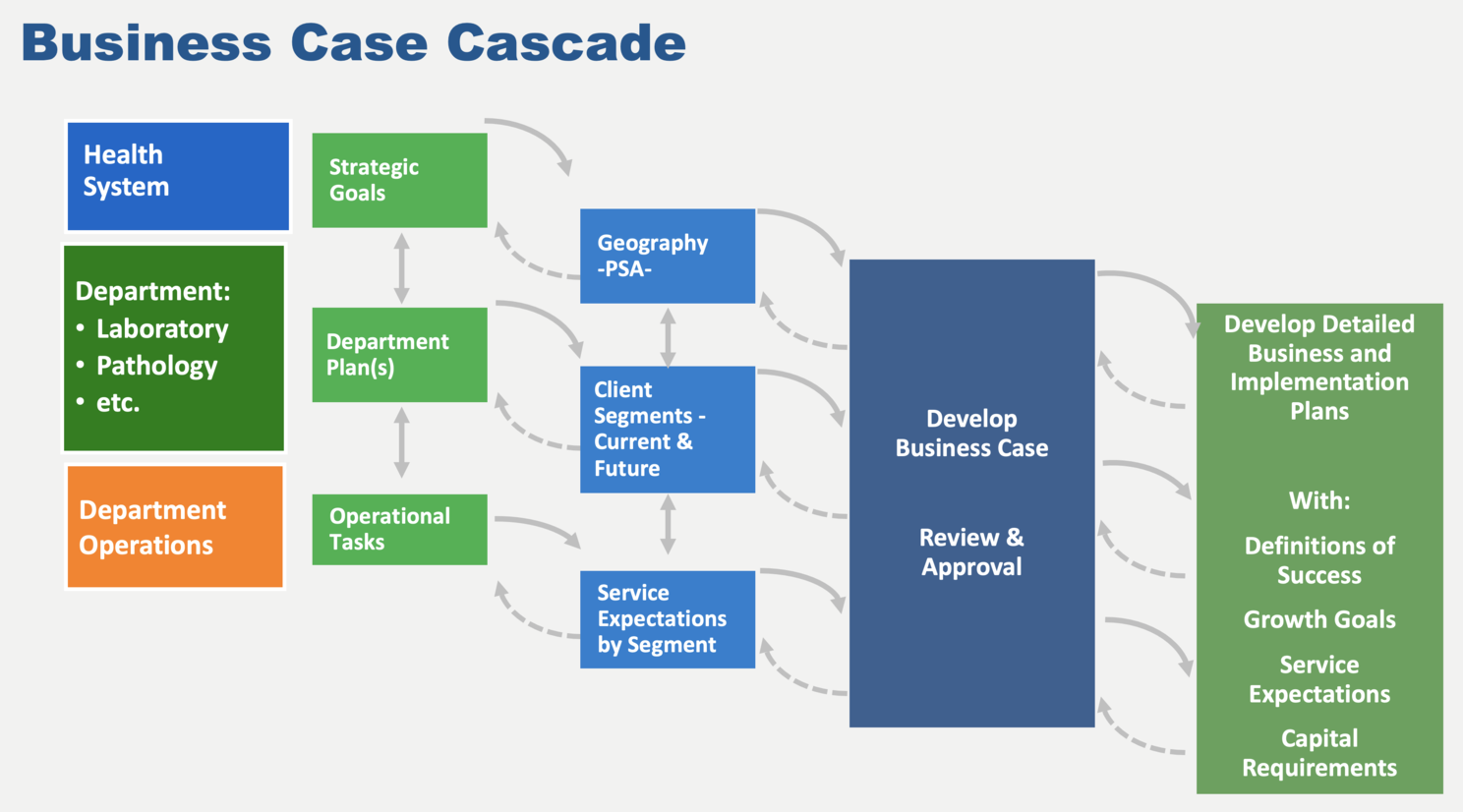
- Labacoeconomics™: Expanding the Role of Clinical Laboratories in Value-Based Healthcare - February 26, 2024
- Pace of Hospital Lab Acquisitions Likely to Remain Steady - April 29, 2023
- Measuring Clinical Laboratory Contributions - April 29, 2023
